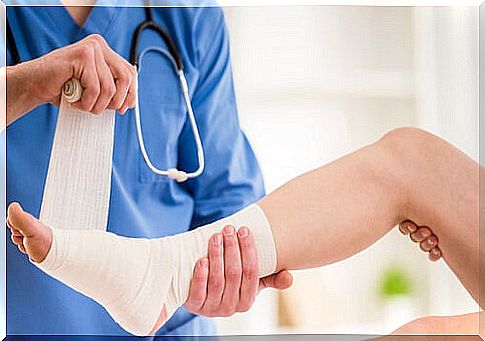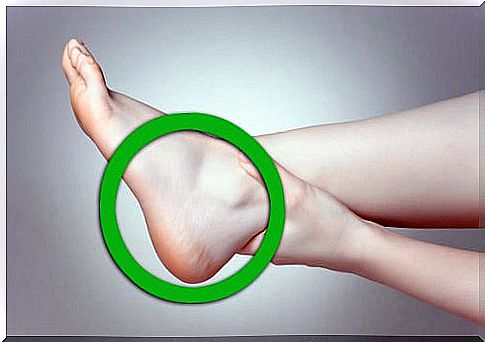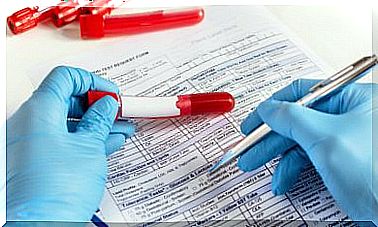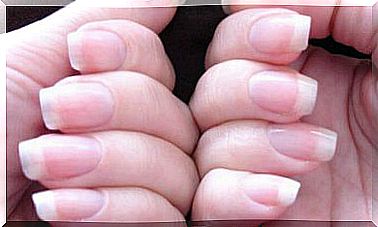Sprains: Why Do They Happen? How Are They Treated?
Depending on the severity of the sprain, it is very important to rest and not force the joint so that it does not suffer and thus, to be able to achieve a complete recovery in a more effective and faster way.
Ligament sprains, strains, or strains are more common than we think. Not only do they affect athletes, but any domestic accident can cause a sprain.
In this article we will tell you why they happen and how they are treated so that you are prepared if you suffer them.
What to know about sprains?
According to this study, sprain is understood to be the total or partial distention or rupture of a ligament that occurs as a consequence of its traction or excessive stretching. Likewise, the study continues to explain that it is the most frequent lesion of the musculoskeletal system, but its frequency of presentation is not exactly known because most people who suffer small sprains, most of the times, do not attend to an emergency unit.

Once this is known on a scientific basis, we can then say that it is an injury to the ligaments due to various causes: torsion, excessive stretching or strain. Normally, sprains are accompanied by swelling, pain, and bruising that prevent proper movement.
They can be caused by a fall, a blow or by a sudden or excessive movement. It is necessary to know the difference between sprain, dislocation, and tear, as defined by this study, for example.
- The dislocation is more severe because it involves a separation of the bones.
- In the case of the tear, the muscular tissues are compromised.
The number of days to recover from a sprain can vary depending on the severity of the injury and individual conditions. The most common areas of sprain are:
- Ankle.
- Elbow.
- Wrist.
- Thumb.
- Neck.
- Knee.
- Shoulder.
If we distinguish between athletes and non-athletes, the most common are:
No athletes
- Ankle.
- Knee.
- Wrist.
Athletes
- Ankle.
- Knee.
- Shoulder.
Depending on the activity we carry out, we can suffer a sprain in a certain place, although in almost all cases (which do not include athletes) it is due to a bad movement or a domestic accident.
Degrees of sprain
According to this study, previously cited, they are defined as follows:
First grade
It is a partial strain, does not include a ligament tear, and some very slight movements can be performed. The recovery is complete and there are no sequels. The damage is microscopic.
Second grade
The ligaments are partially or totally torn, the movements are abnormal and the pain is very intense. Recovery is complete if the person makes the corresponding rest. In some cases, slight sequelae remain since the damage is macroscopic, evident to the naked eye.
Third degree
The ligament tear is total and there is also bone damage. Surgical treatment is necessary to repair the damage and there are almost always moderate to severe sequelae such as stiffness, fragility or chronic pain. It is the only one that, when produced, generates instability in the joint (although in some grade 2 it can also occur).
Treatment and rehabilitation phases of sprains

These apply to grades 1 and 2, because grade 3 requires surgical intervention. As soon as a joint is sprained, it is necessary to sit in a chair or lie down on the sofa. According to information from the study that we have been citing:
- Rest is very important, always with the limb elevated so that the edema drains and the area does not swell.
- On the other hand, it is recommended to apply cold immediately because it reduces the initial swelling and pain. Wrap ice in a clean, dry cloth and apply to the affected area for 20 minutes. Repeat every 4 hours for the first 3 days.
- Depending on the degree of the sprain, immobilization of the limb will be required. For example, bandages, splints, or even a cast can be used. However, this must be decided by a doctor since in some sprains it is better not to immobilize the area.
- During all this time, it is also advisable to consume an anti-inflammatory every 8 hours to avoid pain and prevent inflammation from progressing.
- During the night, try to keep the affected area elevated so that the edema does not increase.
Rehabilitation phases for first and second degree sprains
Phase 1 (first 72 hours)
Absolute rest with the limb raised, the application of ice and the placement of a bandage is necessary.
Phase 2 (between the 4th and 7th day)
Rest is relative, if necessary, you can use crutches to support yourself when walking. It is important not to force the joint when trying to do any type of activity or movement.
Many people wear an elastic bandage that you can get at drugstores.
Phase 3 (from the second week)
At this time compression bandages should be used so that the edema disappears completely and hurts less and less. With strengthening exercises, more and more mobility is achieved and the discomfort disappears.
Ankle Sprain Rehabilitation Exercises
We will talk about this type of kink because it is the most common. Some of these exercises can be done in case of sprains in other extremities (wrists, knees or shoulders). For this, we can cite the following study, entitled: “Functional rehabilitation proposal for the treatment of ankle sprain and lateral instability in high-performance athletes.”
Band stretch
It is done lying on your side on a mat and with your legs stretched out. An elastic band is placed between the ankles and the one on top (the injured one) is stretched as far as possible.
Other versions are to do the exercise sitting or standing, depending on the capabilities of each.
Joint mobility
Once the inflammation has subsided and the pain is not so strong, the joint should be moved in all directions and in circles. A good exercise is to trace different shapes in the air to strengthen the area well.
Push-ups
Lying on a flat surface with your feet flat on the floor, raise your ankle repeatedly. It is very useful because it allows you to walk normally again.
Ball exercises
It can be a special or a tennis one. Standing, the ball is supported on the sole and some pressure is exerted to make it move from one side to the other. It can also be done sitting down. The movements are always circular.
Stretching
Stand with your legs together. Lower your back as much as possible, trying to reach your feet or heels. Open your legs a little (shoulder width) and do the same. Repeat, opening your legs more and more.
Ankle sprains are very common injuries that regardless of degree should be evaluated by a doctor. You can then use these guidelines to help speed up joint recovery.









